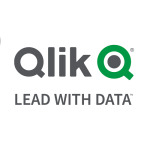Microsoft Power BI is a very powerful tool. It allows us to extract data from Excel or Share Point.
We can send various project reports from the dashboard to management. It allows us to set up our own preferences.
We can work with all sorts of data from the previous year or two. With that native data, we can have everything in one dashboard that accurately reflects the reporting. The visuals are great and make everything look very professional. We can change the look and feel or manipulate the data according to our requirements. It's extremely flexible.
The solution has been very stable so far.
We find the product to be quite scalable.
It's quite difficult to learn how to use Power BI. I'm not from the IT background, and I've been given the license to use the Power BI, however, I find that the support and video demos from Microsoft are not really helpful for me. I don't handle Microsoft BI 24/7. My working time isn't dedicated to using it and learning it. I need it for certain tasks and trying to wrap my head around it, while also handling other duties is difficult. There's too much of a learning curve for beginners.
The cost of the solution is high.
We originally started our migration back at the end of 2019. We've used it for a year or two now.
The product is stable. There are no bugs or glitches. It doesn't crash or freeze. It's reliable.
The solution can scale. If a company needs to expand it, it can do so. It's not a problem.
Right now, in our organization, only 15 of us have the full license for the Power BI Pro. Not everyone in the office actually uses it. However, we have over 1,000 people using various other Microsoft products in our company.
As I am not technical, I did not handle the initial setup. We have IT personnel within our organization that handled it. I just gave them my laptop, and they just installed it for me. Occasionally, they can also do it remotely from their office to our office. I never touch it. We just open the apps from the desktop. The process, when do that way, i's quite convenient. It's quite easy for end-users.
We have our own IT team that handles the installation. They either take the laptop or do the installation remotely. In either case, it's handled in-house and not by integrators or consultants.
The solution is quite expensive.
I'm an end-user of the product, however, I'm not overly technical or in IT.
We have a custom Microsoft setup. We are using a few apps from Microsoft, such as the Microsoft Plan, and we are using Power BI, Power Automate, et cetera. It's all from Microsoft, and it is part of our IT infrastructure. When we combine it together, it is a project and portfolio management solution. It is not a commercial, off-the-shelf product.
I'm not sure which version number we are using.
I'd rate the solution at a nine out of ten.
In terms of Microsoft Power BI, for all people who need to do their own reporting or want to visualize their daily work or tasks, in terms of projection, giving others a view on what they are doing, it's a very good tool. It allows users to show projections of what we are doing. Users can grab statistics, which is quite convenient, and understand what they are doing from a visual perspective, which we find quite useful.


















